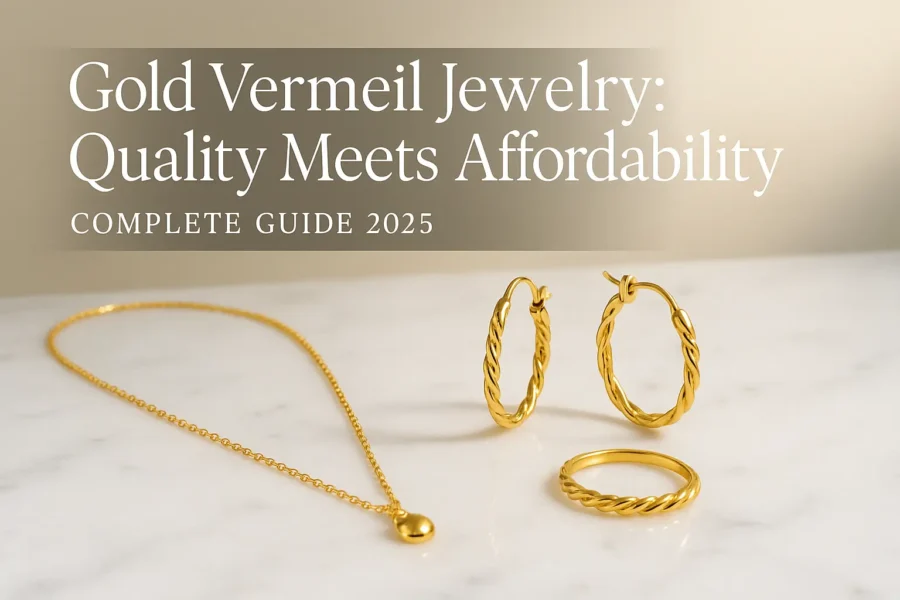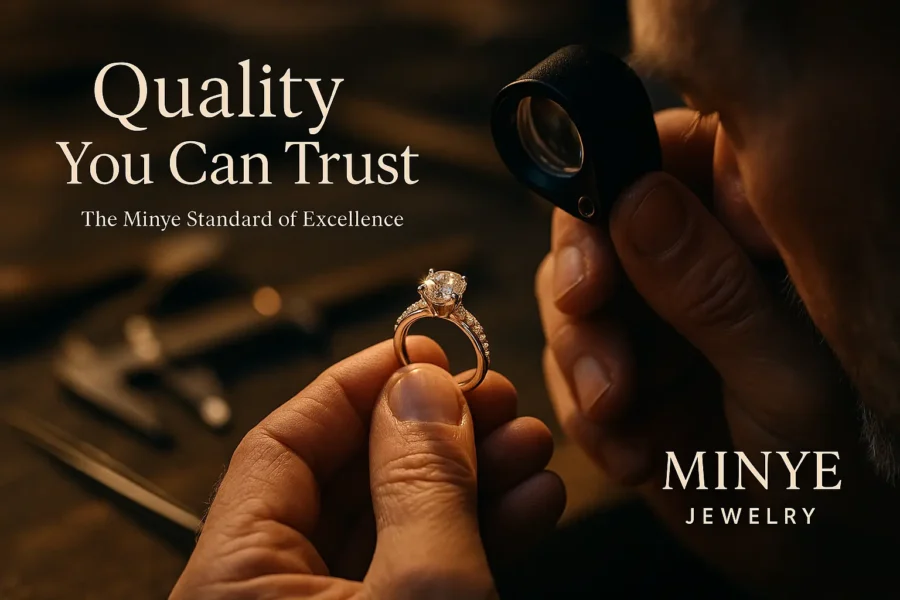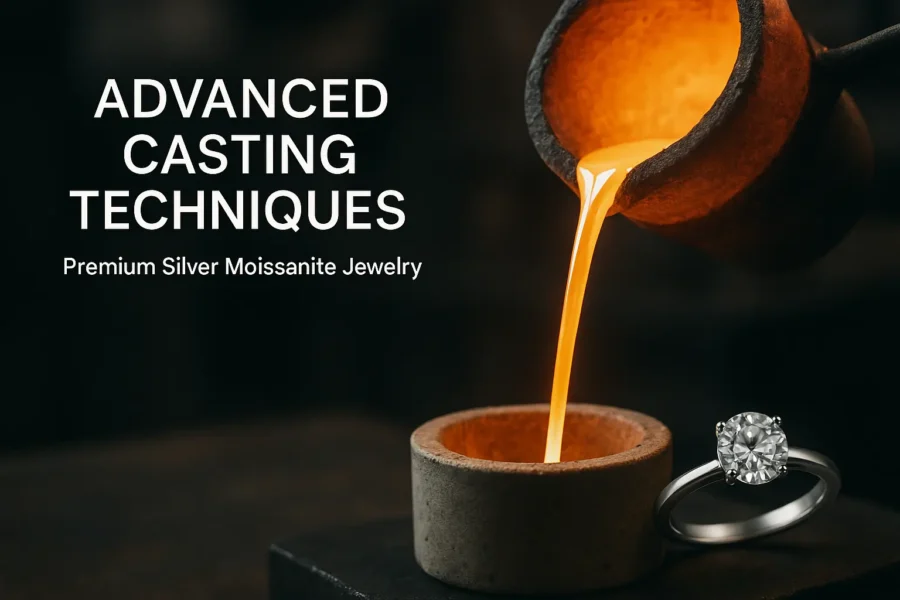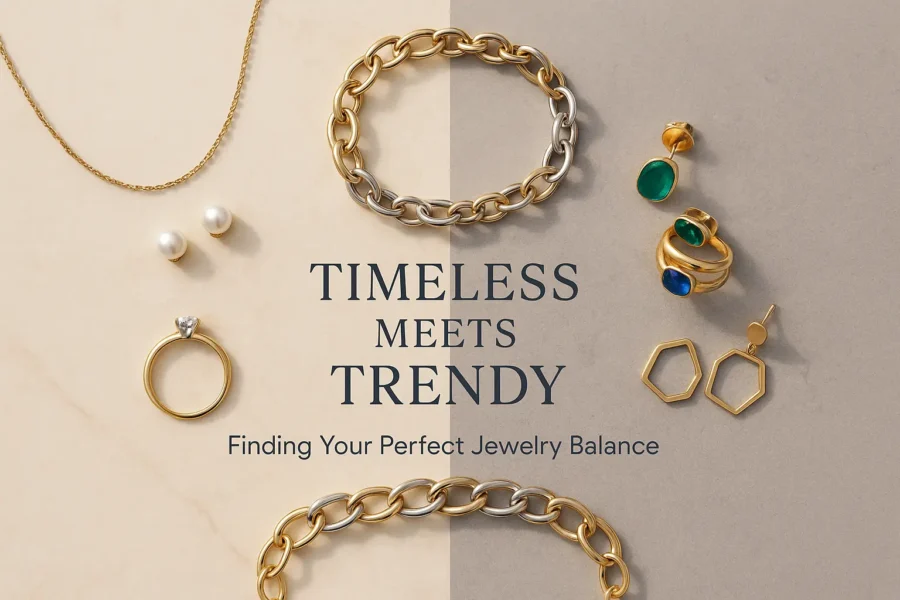When shopping for jewelry, the beauty often lies in the details. While gemstones and design capture immediate attention, the plating plays an equally crucial role in determining both the appearance and longevity of your pieces. Whether you’re investing in your first statement necklace or expanding an existing collection, understanding jewelry plating options can save you money and ensure your pieces maintain their stunning appearance for years to come.
Modern jewelry plating offers the perfect balance of luxury aesthetics and practical affordability. Instead of purchasing solid precious metals, plated jewelry allows you to enjoy the same brilliant finishes at a fraction of the cost while still maintaining quality and durability when properly selected and maintained.
Understanding Your Plating Options
Rhodium Plating: The Premium Standard
Rhodium plating stands out as the most popular choice for white metals, offering an exceptionally bright, mirror-like finish that surpasses even platinum in brilliance. This precious metal creates a protective barrier that prevents tarnishing and provides excellent scratch resistance.
The hypoallergenic properties of rhodium make it ideal for those with sensitive skin. Unlike many other plating materials, rhodium contains no nickel or other common allergens, making it suitable for daily wear without irritation. However, rhodium plating typically lasts 12-18 months with regular wear before requiring renewal.
Professional jewelers often recommend rhodium for engagement rings and wedding bands due to its durability and stunning appearance. The plating process involves multiple layers, with thickness ranging from 0.1 to 0.25 microns for optimal results.
Gold Plating: Classic Elegance with Versatility
Gold plating remains the most traditional choice, offering warmth and timeless appeal. Modern gold plating techniques achieve thickness variations from 0.5 to 5+ microns, with thicker applications providing superior longevity. The three primary options include yellow gold for classic appeal, rose gold for contemporary warmth, and white gold for modern sophistication.
Vermeil represents the premium tier of gold plating, featuring thick gold layers over sterling silver bases. This combination provides excellent value while maintaining the appearance of solid gold jewelry. Quality vermeil pieces can last several years with proper care, making them ideal for frequently worn items.
The cost-effectiveness of gold plating allows jewelry enthusiasts to own pieces in multiple gold tones without the expense of solid gold alternatives. This versatility enables better coordination with different outfits and occasions.

Platinum Plating: Luxury Alternative
Platinum plating offers superior scratch resistance and maintains its natural white color without yellowing over time. This option provides exceptional durability, often lasting longer than rhodium plating while maintaining a sophisticated appearance.
The deep luster of platinum creates a subtle difference from rhodium’s bright shine, appealing to those who prefer understated elegance. While platinum plating costs more initially, the extended lifespan often provides better long-term value for frequently worn pieces.
Specialty Finishes: Black Rhodium and Ruthenium
Contemporary jewelry design has embraced dramatic dark finishes through black rhodium and ruthenium plating. These specialty options create striking contrasts and modern aesthetics, particularly popular in men’s jewelry and avant-garde pieces.
Black rhodium requires careful maintenance as it shows wear more readily than traditional finishes. However, when properly cared for, these dark platings create unique visual impact that sets jewelry apart from conventional options.
Key Factors for Making the Right Choice
Skin Sensitivity Considerations
Metal allergies affect approximately 15% of women and 2% of men, with nickel being the most common culprit. If you experience itching, redness, or rashes when wearing certain jewelry, choosing hypoallergenic plating becomes essential.
Rhodium plating acts as an effective barrier, preventing contact between sensitive skin and potentially irritating base metals. For those with severe sensitivities, platinum plating offers another excellent option, as both metals rarely cause allergic reactions.
Testing for metal allergies before making significant jewelry investments can prevent future discomfort and costly exchanges. Many jewelry stores offer small sample pieces for sensitivity testing, or you can consult with a dermatologist for professional allergy testing.

Lifestyle and Wear Patterns
Your daily activities significantly impact plating longevity. Office workers who type frequently may experience faster wear on rings, while those in manual professions need more durable plating options. High-friction areas such as ring undersides and bracelet clasps require thicker plating for optimal durability.
Consider your exposure to chemicals, including cleaning products, perfumes, and lotions. These substances can accelerate plating wear, particularly with gold-plated pieces. If your lifestyle involves regular chemical exposure, rhodium or platinum plating typically provides better resistance.
Professional environments may influence your plating choice. Conservative workplaces often favor classic gold or platinum tones, while creative industries may embrace more adventurous options like black rhodium or unique color variations.
Budget Planning and Long-Term Costs
While plated jewelry offers significant initial savings compared to solid precious metals, understanding maintenance costs helps in making informed decisions. Re-plating services typically cost between $60-120 depending on the piece size and plating type.
Calculate the total cost of ownership by considering both initial purchase price and expected re-plating frequency. A higher-quality piece with thicker initial plating may cost more upfront but require less frequent maintenance, providing better long-term value.
Minye Jewelry offers transparent pricing on both initial plating options and future maintenance services, helping customers make informed decisions based on their specific needs and budgets. Their expert team can provide personalized recommendations based on your lifestyle and wearing preferences.
Base Metal Compatibility
The foundation metal significantly affects plating success and appearance. Sterling silver provides an excellent base for both rhodium and gold plating due to its complementary color and superior adhesion properties. Proper color matching between base metal and plating ensures seamless appearance and optimal adhesion quality.
Brass and copper bases work well with gold plating but may show through more quickly than silver bases. Understanding these compatibility factors helps explain price differences and expected longevity between similar pieces.
Maximizing Plating Longevity
Essential Care Practices
Proper storage extends plating life significantly. Store each piece separately in soft pouches or individual compartments to prevent scratching during storage. Avoid contact with perfumes, lotions, and cleaning products, which can cause premature plating deterioration.
Remove jewelry before swimming, exercising, or sleeping to minimize exposure to chemicals and friction. These simple habits can double or triple the lifespan of plated pieces, making them more cost-effective investments.
Clean plated jewelry gently with soft, lint-free cloths. Avoid abrasive cleaners or polishing cloths designed for solid metals, as these can remove plating layers. When in doubt, consult with professional jewelers for appropriate cleaning recommendations.

Professional Maintenance
Schedule professional assessments to determine optimal re-plating timing before base metals become visible. Preventive maintenance often costs less than restoration after significant wear has occurred.
Experienced jewelers can identify early signs of plating wear and recommend appropriate action. They can also suggest upgrades to thicker plating or alternative finishes based on observed wear patterns from your specific lifestyle.
Quality Standards and Selection Criteria
Understanding Plating Measurements
Industry standards classify plating thickness in microns, with flash plating (under 0.175 microns) suitable only for occasional wear, standard plating (0.5-2.5 microns) appropriate for regular use, and heavy plating (over 2.5 microns) ideal for daily wear pieces.
Micron measurements directly correlate with durability expectations, making this specification crucial for informed purchasing decisions. Reputable sellers provide specific thickness information rather than vague quality claims.
Choosing Reliable Sources
Look for jewelers who provide detailed specifications, warranty coverage, and clear maintenance policies. Quality manufacturers maintain consistent standards and offer customer support for ongoing care questions.
Minye Jewelry exemplifies these standards with detailed product specifications, comprehensive warranties, and expert customer service. Their commitment to quality ensures customers receive pieces that meet or exceed expected performance standards while providing ongoing support throughout the jewelry’s lifespan.

Making Your Decision: A Practical Framework
Personal Assessment Checklist
Evaluate your skin sensitivity through patch testing or consultation with medical professionals if you have a history of metal reactions. Analyze your daily activities, work environment, and leisure pursuits to identify potential wear factors.
Consider your style preferences and wardrobe coordination needs. Do you prefer warm gold tones, cool silver shades, or dramatic contemporary finishes? Your existing jewelry collection can guide new additions for optimal coordination.
Budget planning should include both initial investment and ongoing maintenance costs. Factor in your wearing frequency and lifestyle demands to estimate realistic plating longevity for accurate cost projections.
Professional Consultation Benefits
Expert jewelers provide personalized recommendations based on comprehensive assessments of your needs, preferences, and budget constraints. They can explain the nuances between different plating options and help you understand the trade-offs involved in each choice.
Professional consultation also covers proper care techniques specific to your chosen plating type and lifestyle requirements. This knowledge helps maximize your investment while ensuring long-term satisfaction with your jewelry choices.
Minye Jewelry’s experienced team offers comprehensive consultations to help customers navigate plating options effectively. Their expertise ensures you receive pieces perfectly suited to your individual requirements while understanding the care needed to maintain their beauty.

Conclusion: Investing in Beautiful, Long-Lasting Jewelry
Choosing the right jewelry plating involves balancing aesthetic preferences, practical considerations, and budget constraints. Understanding the characteristics of different plating options empowers you to make informed decisions that provide years of enjoyment and value.
Quality plating transforms affordable base metals into stunning pieces that rival solid precious metal jewelry in appearance while remaining accessible to diverse budgets. With proper selection and care, plated jewelry offers an excellent entry point into luxury aesthetics without compromising on style or durability.
The key lies in matching plating choice to your specific needs rather than assuming one option suits all situations. Whether you choose the brilliant shine of rhodium, the classic warmth of gold, or the modern sophistication of platinum plating, informed decisions lead to satisfying long-term ownership experiences.
Remember that quality plating represents an investment in both beauty and practicality. By choosing reputable suppliers like Minye Jewelry and following proper care guidelines, your plated pieces can provide years of stunning appearance while maintaining their value and appeal throughout their lifespan.






